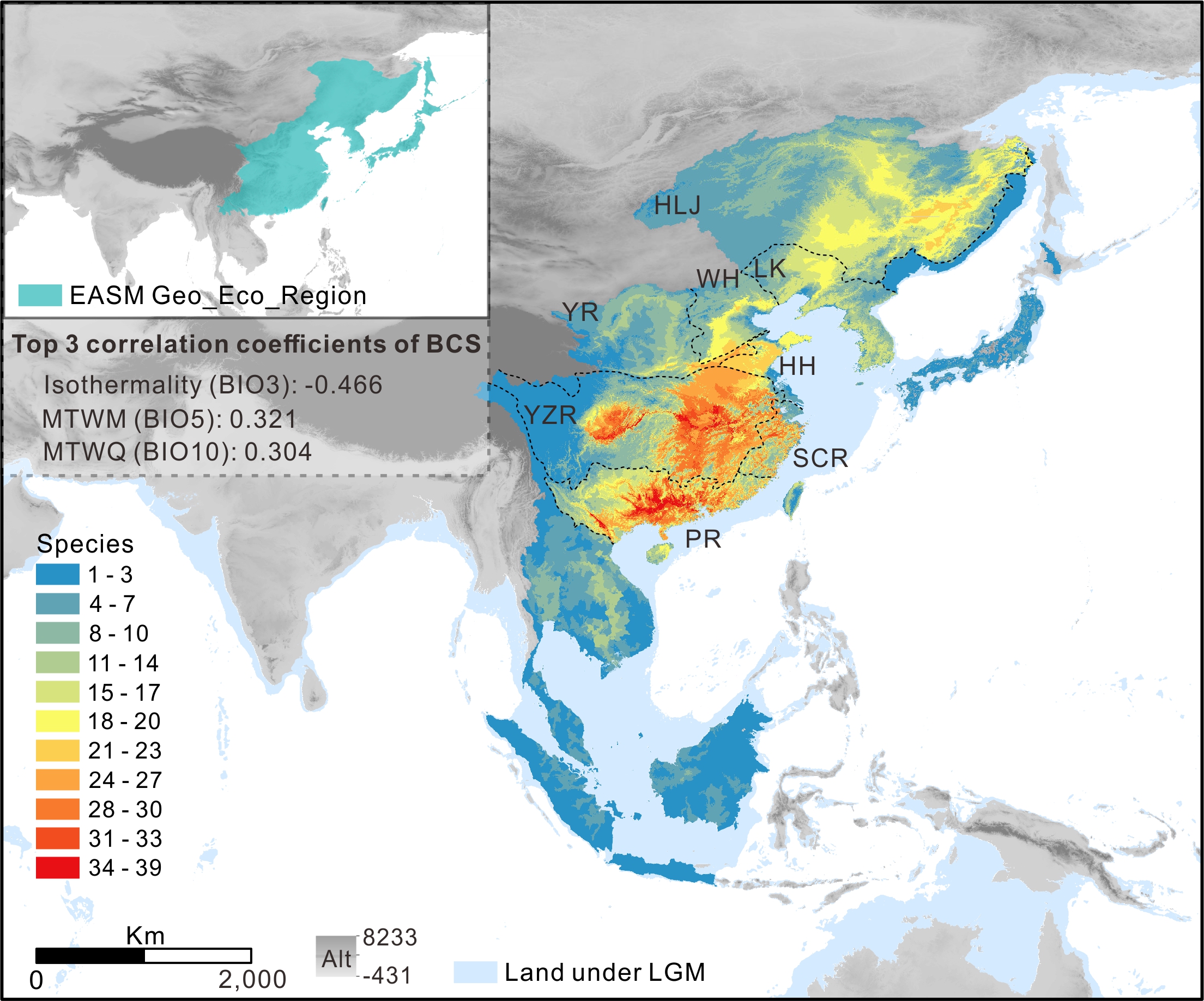Highlights
Monsoon Boosts Radiation of Endemic East Asian Carps
The establishment of the East Asian monsoon (EAM) has created a series of interlocking river-lake systems that, in summer, form food-rich floodplains before quickly shrinking and entering a dry period in autumn and winter. How does this unique hydrological pattern affect the fish in East Asia?
Previous studies suggest that the endemic East Asian carps (EEACs), a specific lineage of about 154 species, may be the product of EAM activities. However, molecular phylogenetic studies have not reached a consensus regarding either the EEAC’s evolutionary chronology or phylogenetic relationships. Therefore, is it true that the origin and evolution of EEAC are related to the EAM? If yes, how does EEAC radiate in response to EAM activities? And what are the underlying factors that underpin the radiation of EEAC against monsoon activities?
Recently, a research group led by Prof. HE Shunping from the Institute of Hydrobiology (IHB) of the Chinese Academy of Sciences elucidated the EEAC’s evolution systematically from ecogeographic, phylogenetic, macroevolutionary, and comparative genomic perspectives. This study was published in SCIENCE CHINA Life Sciences.
The researchers conducted ecogeographical, phylogenetic genomic, and macroevolutionary analyses to assess the relationship between EEAC and EAM. It was discovered that EEACs tend to be found in areas with distinct monsoonal characteristics in terms of distribution. From an evolutionary perspective, EEACs originated immediately after the establishment of the East Asian monsoon, subsequently, their events of speciation, morphological diversification, and biogeographic activities also showed a high correlation with monsoon activities.
By further parsing the results of the phylogeography, the researchers found that EEACs originated in the ancient ‘Yangtze River-Pearl River’ basin and had migrated to both the north and the south over a long period of time.
After 12 Ma, floodplains characterized by intertwined rivers and lakes emerged in the eastern part of China. This period was likely the most prosperous for the EEAC. After 5 Ma, global temperatures decreased and there were multiple large-scale glaciations in East Asia, which may have contributed to the reshuffling of EEAC distribution patterns. Both the return of island species to the mainland and the migration of northeastern species to the central part of China occurred in this period.
Across the evolution of EEAC, more in situ diversification occurred in the ‘Yangtze River-Pearl River’ basin than in other regions, and more in situ events of diversification were mainly concentrated in the 12-4 Ma (‘super monsoon’) period. Thus, this basin appears to have been the EEAC’s evolutionary cradle.
Why could the ancestors of EEACs prosper rapidly in response to monsoon activities? To answer this question, the researchers conducted comparative genomics and found that the innovations in the regulation of the brain and nervous system, as well as processes including nutrient acquisition, environmental perception, and startle response, may have aided their adaptation to river-lake ecosystems in a monsoon setting, which boosted radiation. They also detected rampant interspecific gene flow during the initial period of EEAC’s evolution and speculated that these signs may have fueled their radiation.
This work presented a classic case of fish evolution in East Asia, and the findings will promote the understanding of not only the evolutionary patterns of freshwater fishes in East Asia but also the evolutionary impact of major climatic events on biota.

Macroevolutionary and biogeographical processes of the EEAC (Credit: IHB)

EEAC Distribution patterns (Credit: IHB)
(Editor: MA Yun)